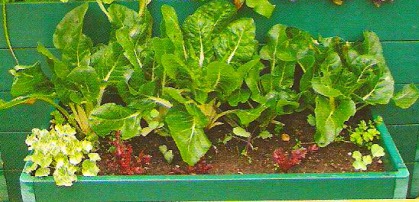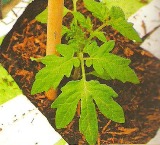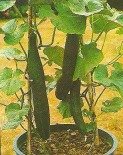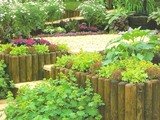|
Tips for Growing in Containers  Growing in containers as I’ve mentioned before, is an easy way to garden especially if you live in the city. I’m going to provide you with some excellent tips that you can use for your container vegetable garden. So let’s get straight into the first container gardening tip… Mulching is not a Good Thing in the Container Vegetable GardenWhen growing in containers, there’s no need to mulch your potted vegetable plants. Mulching tends to choke the soil however; a thin layer of sand or gravel can help prohibit weeds. Container plants require well-monitored feeding with well-diluted liquid feeds. If you’re growing perennial vegetables, always ensure that you provide them with some top dressing and repot them on a yearly basis. The Best Container for Container GrowingThe ideal container to use is one that’s of the right size with sufficient drainage holes to hold your vegetables. There are many top quality planting bags that come with drainage holes and handles that are very easy to use. The good news about using these growing bags is that during the winter season, you can easily fold them up when they are not in use. The Bigger the Pots, The BetterSuccessful container gardening involves the use of a really good sized container. You see the thing with small containers is that they’re difficult to keep moist. Pots that are smaller than 12 inches by 12 inches (30cm by 30cm) are not the right fit. Big pots are definitely the best to use. Vegetable plants that can withstand drought conditions can be used in smaller containers. Several of them can even be planted together and some good examples are Mediterranean herbs. These are excellent for a container herb garden. How to Get Big Pots When Growing In ContainersThe big flower pots that are used for shrubs and trees can be recycled. You can do this after you’ve planted them or you can check with some local landscapers and see if they may have any to spare. There are some gardeners who engage in a lot of vegetable planting and using big pots may tend to take up too much of their garden space. That’s why some of them may not have a problem parting with them. In other words, your decision to use big pots can be determined by your desired gardening direction. Growing Bags are Excellent for a Container Edible Garden Growing bags are very easy to find. You can find them in almost every garden store. The prices are reasonable and are perfect for vegetables such as tomatoes and peppers. The soil within a growing bag tends to be very compacted. The good news however is that the plastic material of the bag tends to be very strong and tough. Therefore ensure that you thoroughly work the bag over to scramble up the contents before you start to plant. This is to make sure that the soil is well distributed within the bag. 5 Steps for Using a Growing Bag
|









